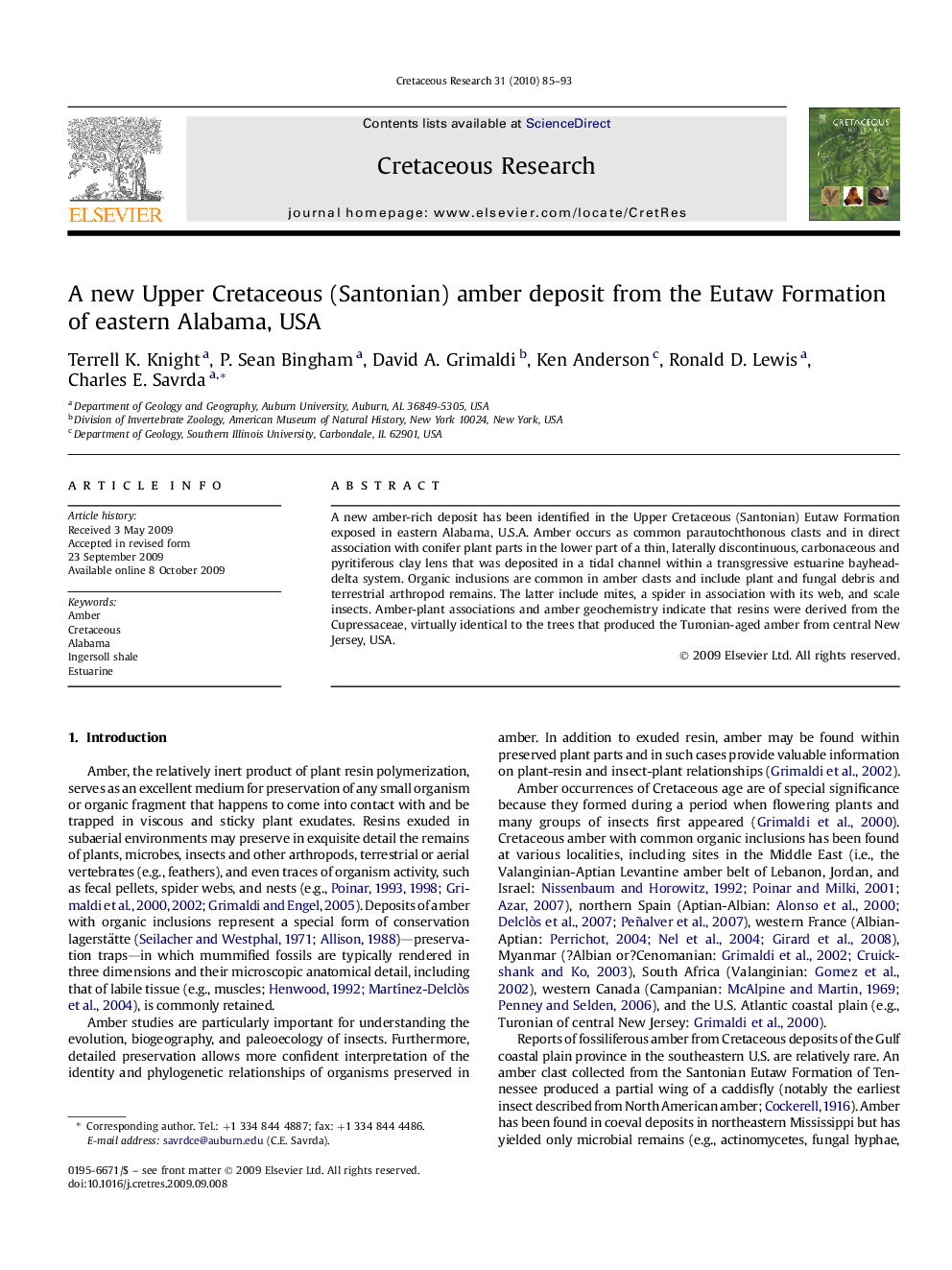| Article ID | Journal | Published Year | Pages | File Type |
|---|---|---|---|---|
| 4747124 | Cretaceous Research | 2010 | 9 Pages |
A new amber-rich deposit has been identified in the Upper Cretaceous (Santonian) Eutaw Formation exposed in eastern Alabama, U.S.A. Amber occurs as common parautochthonous clasts and in direct association with conifer plant parts in the lower part of a thin, laterally discontinuous, carbonaceous and pyritiferous clay lens that was deposited in a tidal channel within a transgressive estuarine bayhead-delta system. Organic inclusions are common in amber clasts and include plant and fungal debris and terrestrial arthropod remains. The latter include mites, a spider in association with its web, and scale insects. Amber-plant associations and amber geochemistry indicate that resins were derived from the Cupressaceae, virtually identical to the trees that produced the Turonian-aged amber from central New Jersey, USA.
